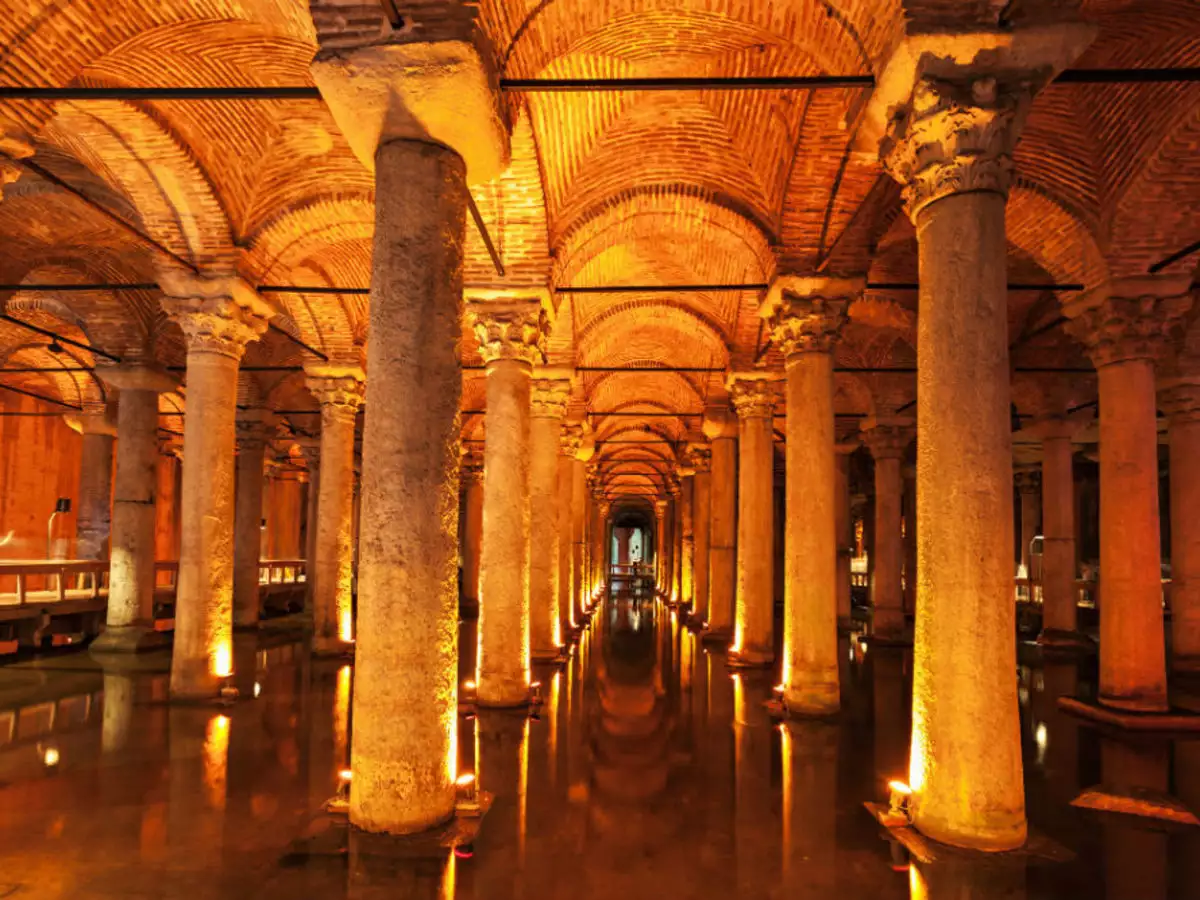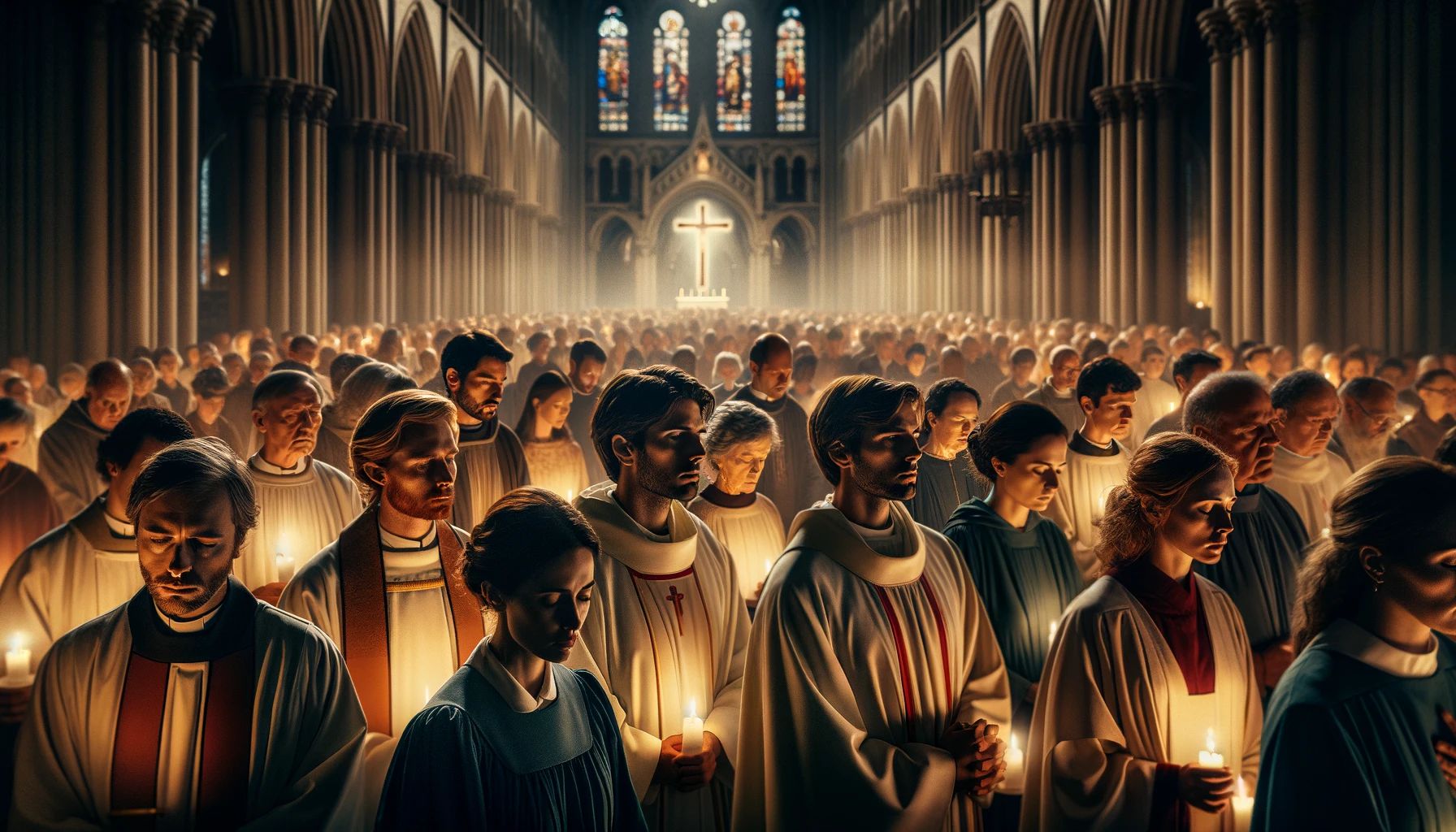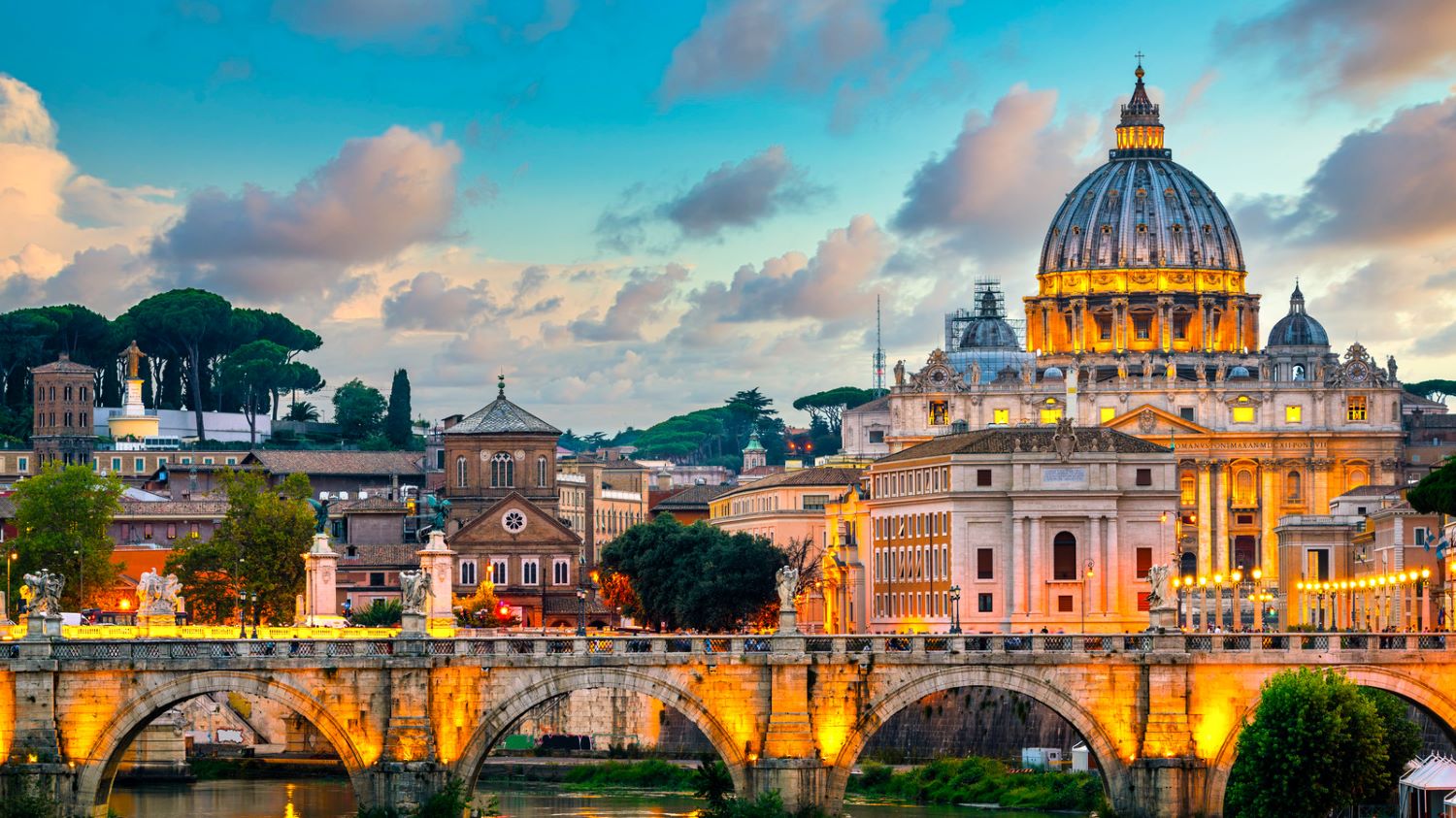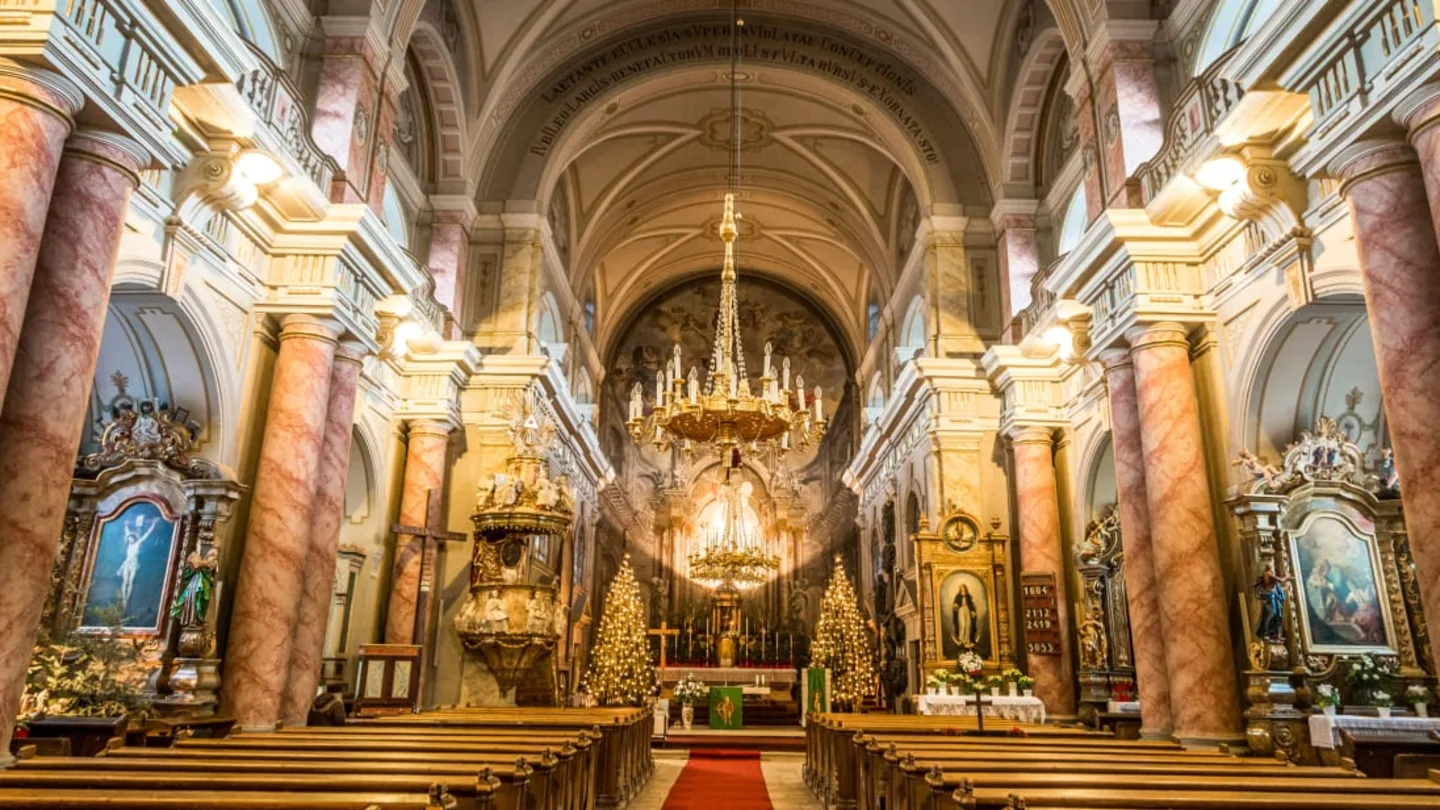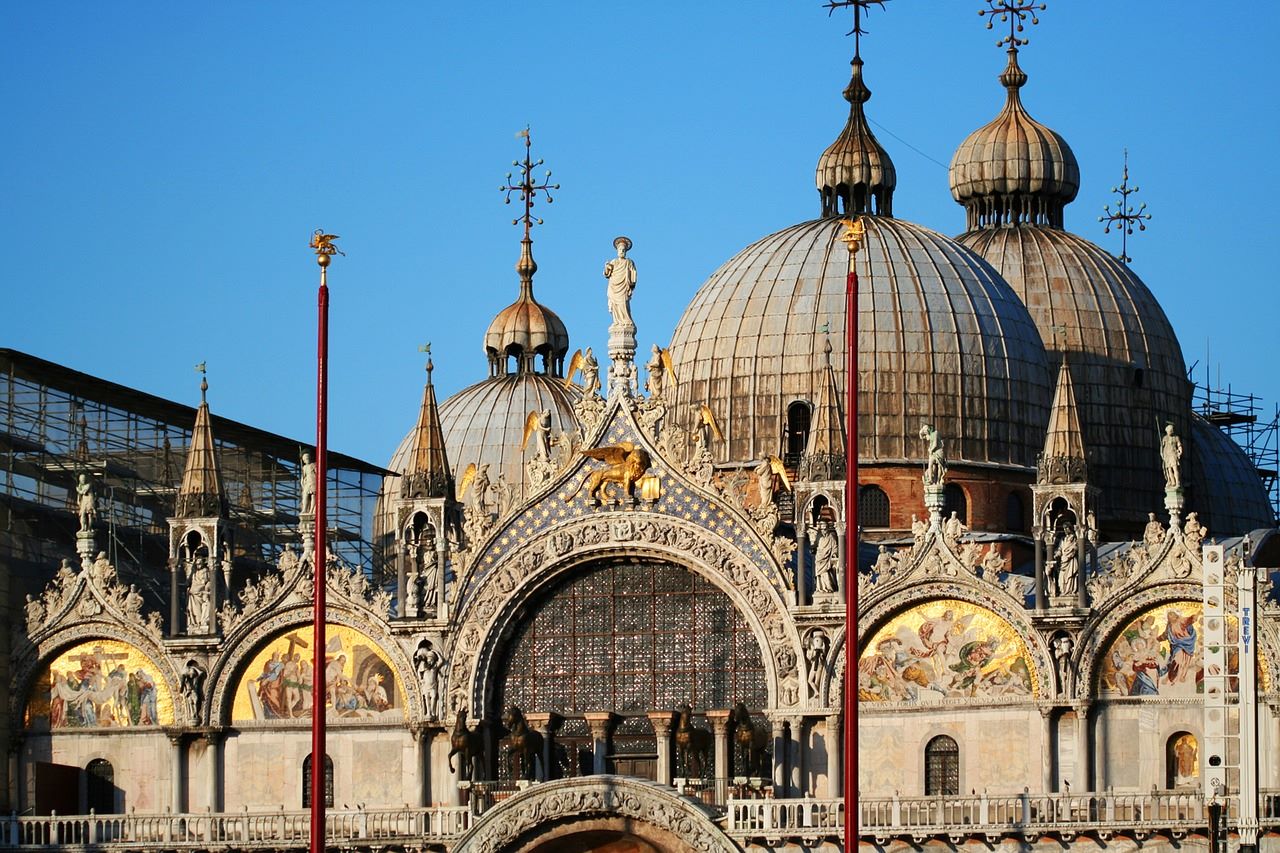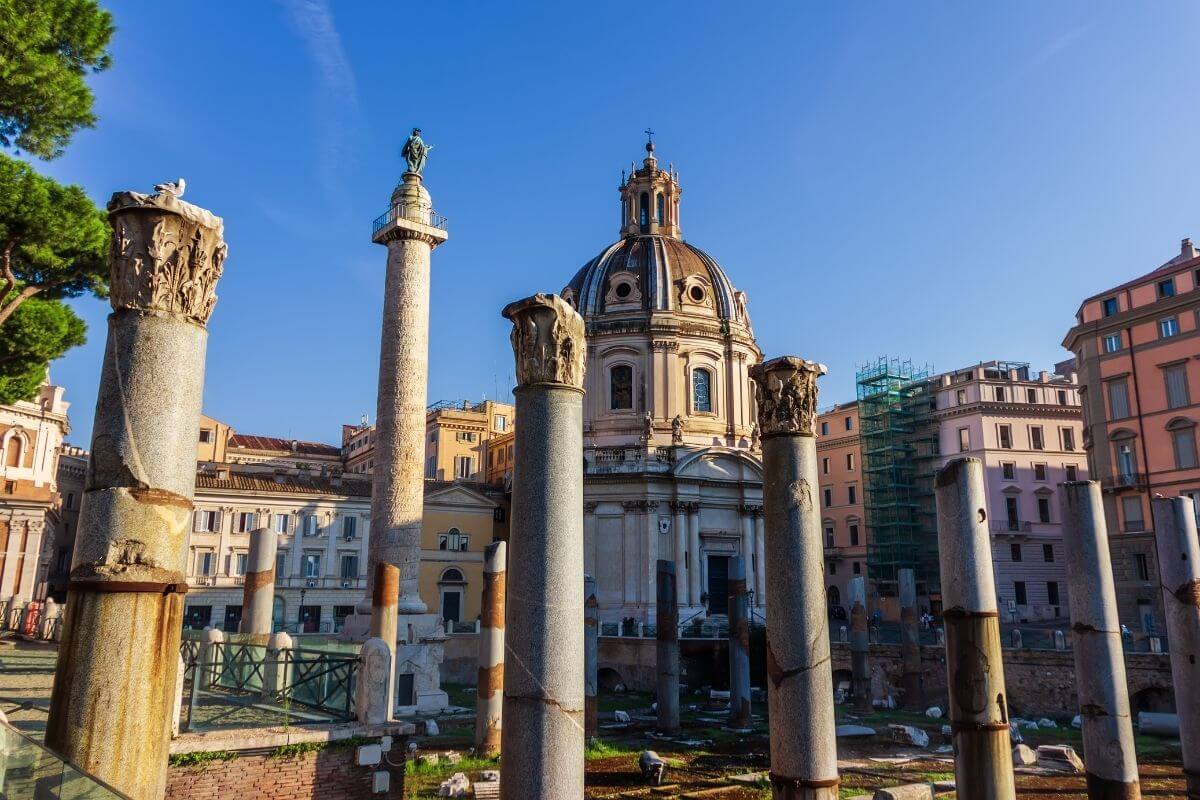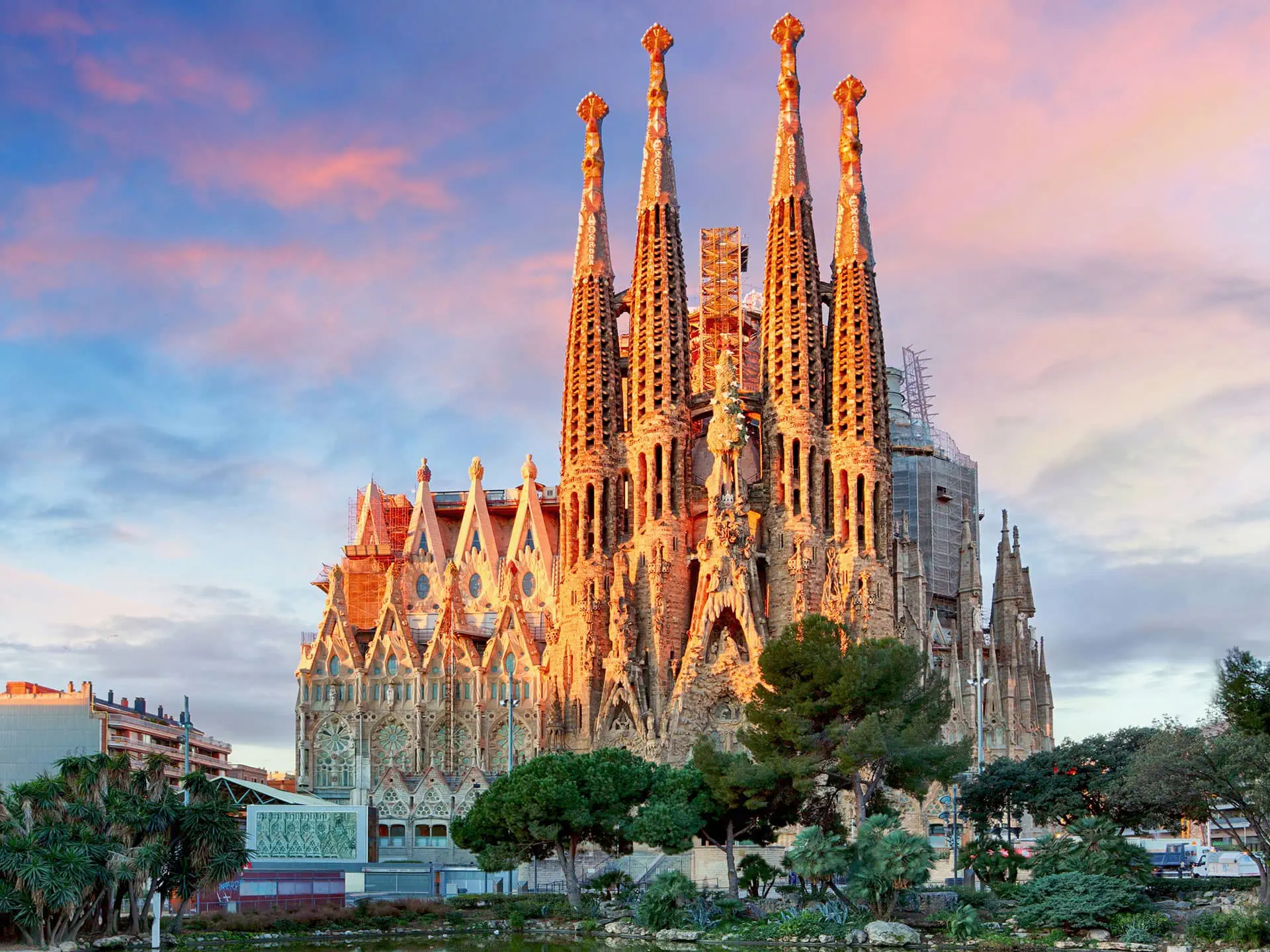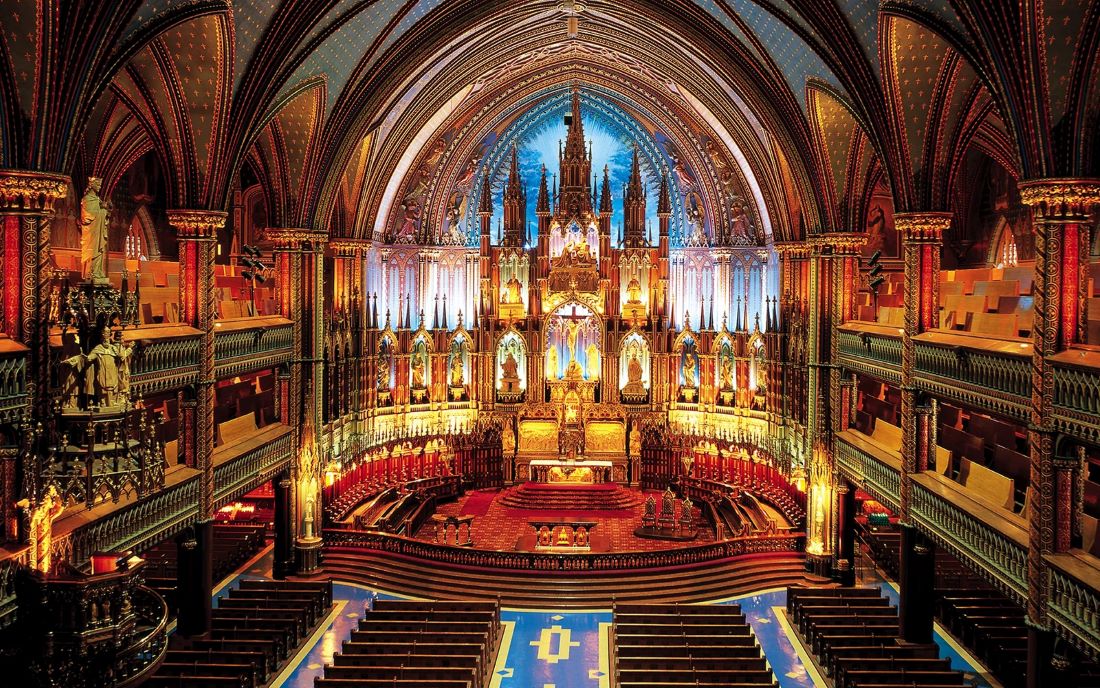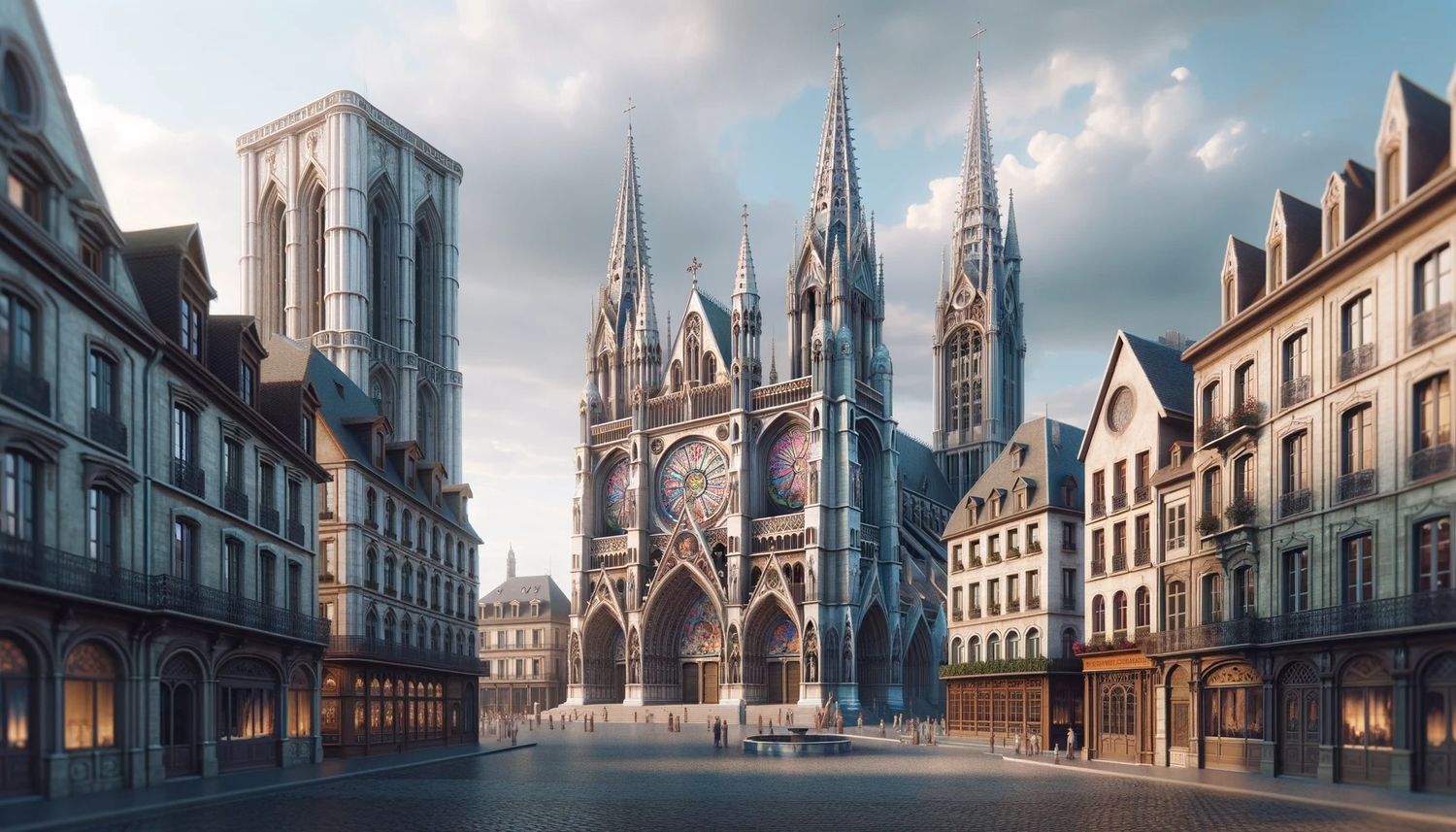Home>Arts and Culture>What Is A Roman Basilica
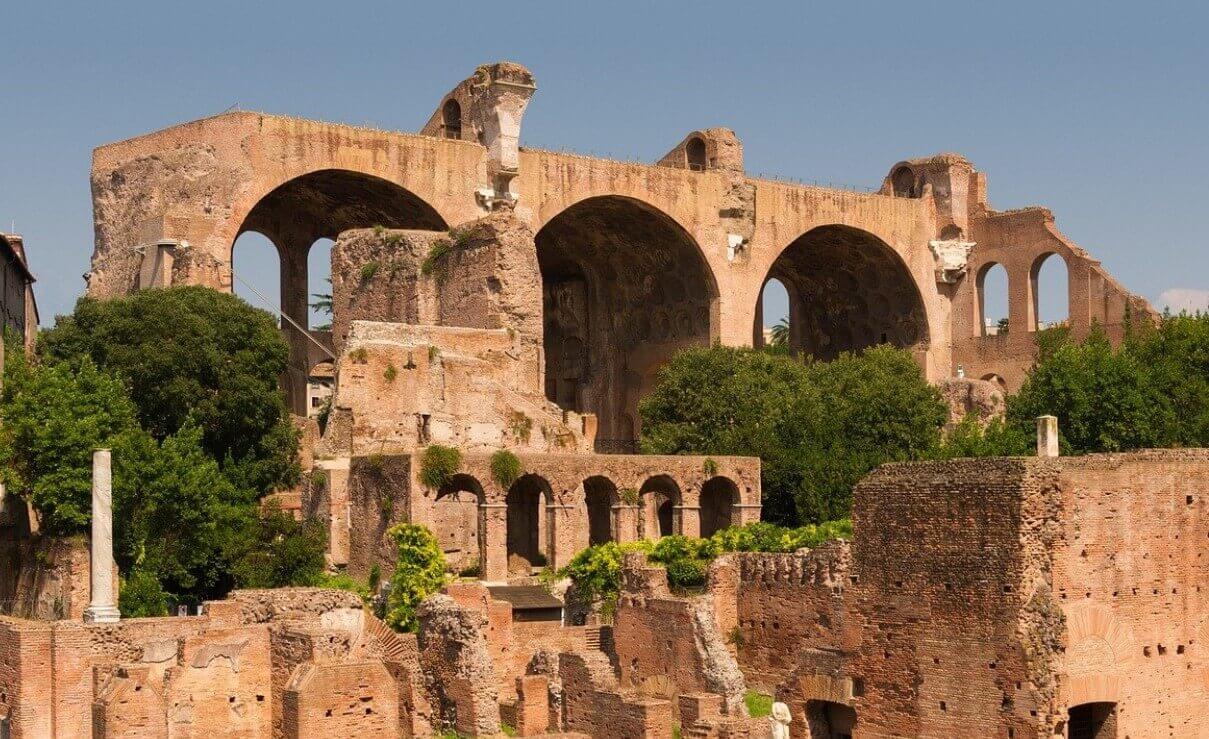

Arts and Culture
What Is A Roman Basilica
Published: February 10, 2024
Jason DeRose, Managing Editor at Christian.net, uses his expertise in religion and journalism to deepen understanding of faith's societal impacts. His editorial leadership, coupled with a strong academic background, enriches the platform’s diverse content, earning him recognition in both journalism and religious circles.
Discover the history and significance of Roman basilicas in this insightful guide. Learn about their role in arts and culture and their impact on ancient architecture.
(Many of the links in this article redirect to a specific reviewed product. Your purchase of these products through affiliate links helps to generate commission for Christian.net, at no extra cost. Learn more)
Table of Contents
Introduction
The Roman basilica stands as a testament to the architectural and cultural prowess of ancient Rome. It is a structure that transcends mere physical presence, embodying the multifaceted essence of Roman civilization. From its origins rooted in the bustling heart of the Roman Forum to its enduring legacy that influences modern architectural design, the Roman basilica holds a storied past and an enduring significance.
As we delve into the depths of this architectural marvel, we will uncover the intricate fusion of function and form that characterizes the Roman basilica. Its evolution from a bustling center of commerce and law to a symbol of grandeur and power reflects the dynamic nature of Roman society. Moreover, the architectural features of the basilica, such as its towering columns and expansive interior spaces, serve as a testament to the ingenuity and engineering prowess of ancient Roman builders.
Beyond its physical attributes, the Roman basilica encapsulates the spirit of communal gathering and exchange that defined Roman life. It served as a hub for legal proceedings, commercial transactions, and social interactions, fostering a sense of unity and civic engagement among the Roman populace. This communal aspect of the basilica not only shaped the social fabric of ancient Rome but also left an indelible mark on the development of public spaces in subsequent civilizations.
As we embark on this exploration of the Roman basilica, we will unravel its rich tapestry of historical, architectural, and cultural significance. From its humble beginnings as a functional gathering place to its transformation into an enduring symbol of Roman ingenuity and influence, the Roman basilica continues to captivate and inspire admirers of art, history, and architecture worldwide. Join us on this journey as we unravel the captivating story of the Roman basilica and its enduring legacy.
Origins of the Roman Basilica
The origins of the Roman basilica can be traced back to the bustling heart of ancient Rome, where it emerged as a multifunctional architectural marvel. Initially, the term "basilica" was used to describe a public building that served as a gathering place for business, legal matters, and civic activities. The concept of the basilica was not exclusive to Rome; it had roots in ancient Greece and was further developed by the Romans to suit their evolving societal needs.
One of the earliest known basilicas in Rome is the Basilica Porcia, commissioned by Cato the Elder in 184 BCE. This structure, with its expansive interior space and rows of columns, set a precedent for subsequent basilica designs. The Basilica Porcia primarily served as a venue for legal proceedings and public gatherings, reflecting the practical and communal nature of early Roman basilicas.
The architectural evolution of the Roman basilica was significantly influenced by the Roman Forum, the central hub of political, commercial, and social activities in ancient Rome. The Forum housed several basilicas, including the Basilica Aemilia and the Basilica Julia, which exemplified the grandeur and functionality of these structures. The basilicas within the Forum not only facilitated legal and commercial transactions but also provided a space for public discourse and communal interaction.
The Roman basilica's architectural features, such as its lofty columns, expansive interior, and clerestory windows, reflected the Romans' innovative engineering and design capabilities. The incorporation of these elements allowed for ample natural light and a sense of grandeur within the basilica, creating an awe-inspiring environment for its diverse functions.
As the Roman Empire expanded, the concept of the basilica transcended Rome and proliferated throughout the empire, influencing the architectural landscape of cities such as Pompeii, Trier, and Ephesus. The adaptability and versatility of the basilica made it a ubiquitous presence in Roman urban planning, reinforcing its status as a symbol of civic pride and communal engagement.
The origins of the Roman basilica, rooted in the practical needs and communal ethos of ancient Rome, laid the foundation for its enduring legacy. Its evolution from a functional gathering place to a symbol of architectural grandeur and civic identity speaks to the resilience and adaptability of Roman architectural innovation. The legacy of the Roman basilica continues to inspire contemporary architectural design and serves as a testament to the enduring influence of ancient Roman civilization.
Architectural Features of a Roman Basilica
The architectural features of a Roman basilica epitomize the ingenuity and grandeur of ancient Roman engineering and design. These structures were characterized by a harmonious blend of functionality, aesthetics, and engineering prowess, setting them apart as iconic symbols of Roman architectural innovation.
1. Grand Interior Space
The hallmark of a Roman basilica was its expansive interior space, which often featured a central nave flanked by aisles. This design allowed for a seamless flow of people and activities within the basilica, accommodating a myriad of functions, from legal proceedings to commercial transactions. The lofty ceilings and clerestory windows bathed the interior in natural light, creating an awe-inspiring ambiance that underscored the grandeur of the space.
2. Colonnaded Portico
The exterior of a Roman basilica typically boasted a grand colonnaded portico, adorned with towering columns that exuded a sense of strength and magnificence. These columns, often adorned with intricate capitals, served as a visual testament to the Romans' mastery of architectural ornamentation and structural integrity. The portico not only provided a striking visual facade but also offered shelter and shade to visitors entering the basilica.
Read more: What Is Roman Catholicism About
3. Central Aisle and Apse
The central aisle of a Roman basilica served as the focal point of the interior space, leading the eye toward the apse, a semicircular recess at the end of the basilica. The apse, often adorned with ornate decorations and mosaics, held symbolic significance and served as a prominent space for judicial proceedings or the display of imperial authority. The architectural arrangement of the central aisle and apse emphasized the hierarchical and ceremonial aspects of the basilica's functions.
4. Engineering Marvel: Clerestory Windows
One of the most remarkable engineering feats of Roman basilicas was the incorporation of clerestory windows. Positioned high on the walls, these windows not only illuminated the interior but also contributed to the structural stability of the basilica. The strategic placement of clerestory windows allowed for ample natural light while minimizing the need for additional support columns, showcasing the Romans' mastery of architectural innovation and structural integrity.
5. Influence on Subsequent Architectural Styles
The architectural features of Roman basilicas left an indelible mark on subsequent architectural styles, influencing the design of Christian churches, medieval halls, and modern public buildings. The grand interior spaces, colonnaded facades, and clerestory windows of Roman basilicas served as a source of inspiration for architects and builders across centuries, perpetuating the enduring legacy of Roman architectural innovation.
The architectural features of a Roman basilica stand as a testament to the Romans' unparalleled mastery of engineering, design, and aesthetic harmony. These structures continue to captivate and inspire admirers of ancient architecture, serving as enduring symbols of Roman ingenuity and cultural influence.
Functions of a Roman Basilica
The Roman basilica served as a multifaceted hub of civic, legal, and commercial activities, embodying the essence of communal engagement and public life in ancient Rome. Its functions transcended mere architectural significance, shaping the social, legal, and commercial landscape of the Roman world.
Read more: What Is The Meaning Of Basilica
1. Legal Proceedings and Administration
One of the primary functions of a Roman basilica was to serve as a venue for legal proceedings and administrative activities. The expansive interior space provided an ideal setting for legal hearings, arbitration, and the dispensation of justice. The central aisle and apse often served as the focal point for judicial proceedings, underscoring the basilica's role as a symbol of legal authority and civic order. Additionally, the basilica housed administrative offices and archives, facilitating the governance and organization of the burgeoning Roman state.
2. Commercial Transactions and Market Activities
The Roman basilica played a pivotal role in facilitating commercial transactions and market activities. Merchants, traders, and artisans converged within the colonnaded portico and interior spaces of the basilica to conduct business, negotiate contracts, and exchange goods. The bustling atmosphere of the basilica's commercial activities contributed to the vibrancy of Roman economic life, fostering a spirit of enterprise and exchange that defined the commercial landscape of ancient Rome.
3. Civic Gatherings and Public Discourse
Beyond its legal and commercial functions, the Roman basilica served as a space for civic gatherings and public discourse. Citizens congregated within the basilica to engage in political discussions, public debates, and communal assemblies. The open and inclusive nature of the basilica fostered a sense of civic engagement and participatory democracy, allowing individuals from diverse social strata to voice their opinions and contribute to the public discourse that shaped Roman society.
4. Symbol of Imperial Authority and Grandeur
The architectural grandeur and ceremonial significance of the Roman basilica elevated its role as a symbol of imperial authority and grandeur. Emperors and magistrates utilized the basilica as a platform for public appearances, proclamations, and displays of imperial power. The apse, adorned with symbolic embellishments and imperial insignia, served as a prominent space for the assertion of imperial authority, reinforcing the basilica's role as a physical manifestation of Roman governance and prestige.
5. Cultural and Social Exchange
The Roman basilica facilitated cultural and social exchange, serving as a melting pot of diverse societal interactions. It provided a space for social gatherings, intellectual discourse, and the exchange of ideas, fostering a sense of community and interconnectedness among the Roman populace. The inclusive and communal nature of the basilica transcended its architectural significance, leaving an indelible mark on the social fabric of ancient Rome.
The multifaceted functions of the Roman basilica underscore its pivotal role in shaping the legal, commercial, civic, and cultural landscape of ancient Rome. Its enduring legacy as a center of communal engagement and public life continues to resonate through the annals of history, reflecting the profound impact of Roman architectural innovation on the fabric of human civilization.
Famous Roman Basilicas
The city of Rome, renowned for its architectural splendor and historical significance, was adorned with several iconic basilicas that left an indelible mark on the urban landscape. These famous Roman basilicas, each with its unique architectural and historical significance, stood as testaments to the grandeur and cultural richness of ancient Rome.
1. Basilica of Maxentius and Constantine
The Basilica of Maxentius and Constantine, also known as the Basilica Nova, stands as a monumental testament to Roman engineering and architectural prowess. Constructed between 308 and 312 CE, this basilica boasted a colossal interior space, flanked by towering columns and crowned by a majestic vaulted ceiling. The Basilica of Maxentius and Constantine served as a venue for legal proceedings and public gatherings, reflecting the multifunctional nature of Roman basilicas.
2. Basilica of Santa Maria Maggiore
The Basilica of Santa Maria Maggiore, one of the four major basilicas in Rome, exemplifies the fusion of Roman and early Christian architectural styles. Built in the 5th century, this basilica features a stunning interior adorned with intricate mosaics and ornate decorations, showcasing the artistic and religious significance of Roman basilicas in the Christian context. The Basilica of Santa Maria Maggiore stands as a testament to the enduring influence of Roman basilicas on subsequent religious architecture.
Read more: What Does Romans Say About Baptism
3. Basilica of San Clemente
The Basilica of San Clemente, a hidden gem nestled in the heart of Rome, offers a captivating glimpse into the layers of Roman history. This basilica, with its intricate frescoes, ancient relics, and subterranean archaeological excavations, embodies the historical depth and cultural richness of Roman basilicas. The Basilica of San Clemente serves as a living testament to the enduring legacy of Roman architectural and religious heritage.
4. Basilica of St. John Lateran
The Basilica of St. John Lateran, considered the oldest and most prestigious basilica in Rome, holds a position of paramount importance in the Catholic Church. With its grand facade, opulent interior, and historical significance as the cathedral of Rome, the Basilica of St. John Lateran stands as a symbol of ecclesiastical grandeur and spiritual reverence. This basilica exemplifies the enduring legacy of Roman basilicas in shaping the religious and cultural landscape of Rome.
5. Basilica of Santa Sabina
The Basilica of Santa Sabina, an ancient Roman basilica located on the Aventine Hill, captivates visitors with its pristine architectural beauty and historical significance. Dating back to the 5th century, this basilica features iconic Roman elements such as towering columns and a spacious interior, while also showcasing early Christian influences in its design. The Basilica of Santa Sabina stands as a testament to the harmonious coexistence of Roman and Christian architectural traditions.
These famous Roman basilicas, each with its unique historical, architectural, and cultural significance, continue to captivate visitors and scholars alike, offering a window into the grandeur and legacy of ancient Rome. Their enduring presence serves as a reminder of the profound impact of Roman basilicas on the architectural, religious, and cultural tapestry of the eternal city.
Legacy of the Roman Basilica
The legacy of the Roman basilica transcends the boundaries of time and space, leaving an indelible imprint on the architectural, cultural, and societal fabric of human civilization. The enduring influence of the Roman basilica extends far beyond its physical remnants, permeating the realms of law, architecture, and communal life.
The architectural legacy of the Roman basilica reverberates through the annals of history, shaping the design of public buildings, religious structures, and civic spaces across diverse cultures and epochs. The grand interior spaces, colonnaded facades, and clerestory windows of Roman basilicas served as a wellspring of inspiration for architects and builders, influencing the evolution of architectural styles from the medieval period to the modern era. The enduring legacy of Roman basilicas is palpable in the design of Christian churches, medieval halls, and contemporary public buildings, underscoring their timeless relevance and adaptability.
Furthermore, the communal ethos and multifunctional nature of the Roman basilica left an indelible mark on the development of public spaces and civic engagement. The basilica's role as a hub for legal proceedings, commercial activities, and communal gatherings fostered a spirit of unity, civic participation, and social exchange that transcended the boundaries of ancient Rome. This legacy of communal engagement continues to resonate in modern urban planning and public architecture, emphasizing the enduring impact of Roman basilicas on the social and communal fabric of human societies.
Moreover, the legacy of the Roman basilica extends to the realms of law and governance, as these structures served as the epicenter of legal proceedings and administrative activities in ancient Rome. The architectural and functional precedents set by Roman basilicas influenced the design of judicial and administrative buildings, shaping the infrastructure of legal systems and governance structures across civilizations. The enduring legacy of the Roman basilica as a symbol of legal authority and civic order underscores its profound impact on the evolution of legal and administrative institutions.
In essence, the legacy of the Roman basilica transcends its historical context, resonating through the corridors of time as a testament to the enduring influence of Roman architectural innovation, communal engagement, and legal significance. Its legacy continues to inspire and captivate admirers of art, history, and architecture, serving as a timeless beacon of Roman ingenuity and cultural influence.
